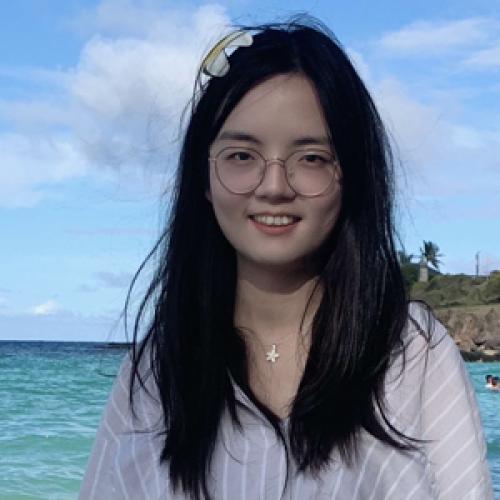
(she/her/hers)
University of Pennsylvania
Nanophotonics, Metamaterials, Plasmonics, Light-matter interaction, Low-dimensional semiconductors
Huiqin Zhang is a final year PhD candiate at the department of Electrical and System Engineering at University of Pennsylvania working with Prof. Deep Jariwala. She obtained her B.S degree in Physics from Fudan University. Her research interests focus on the observation and manipulation of optical properties of low-dimensinal semiconductors by optical cavities, including vdW excitonic and magnetic semiconductors. Her work appeared in several prestigious journals and conferences. She was awarded Vagelos Institute for Energy Science and Technology Graduate Fellow from Univeristy of Pennsylvania (2021), Graduate Student Award from Material Research Society (2021), and DMP Ovshinsky Student Award from American Physical Society (2022).
Strong light-matter interaction in low-dimensional semiconductors
Control of photonic dispersion at the nanoscale is of great importance for applications ranging from lasing to sensing to communications and computing. Plasmonic and high contrast dielectric nanostructures are a frontier approach for dispersion engineering at the dimensions comparable to and smaller than the light wavelength. Materials with resonant quantum confined states provide an alternative route for controlling light propagation and interaction in comparison and are am emergent approach in this regard. Introducing light-matter interactions by creating cavity photons in-plane (with metastructures) or out-of-plane (within multilayers) can provide a large platform of tunability in optical properties of low-dimensional semiconductors.
Van der Waals (vdW) layered semiconductors often manifest strongly bound exciton states at room temperature. Many also exhibit emergent physical and quantum phenomena such as spin-ordering and charge density wave transitions which are of great promise for both electronics and photonic applications. In this talk, I will show that multilayer transition metal dichalcogenides (TMDCs) by themselves provide an interesting platform for excitation and control of excitonic modes, paving the way to exciton-photonics without need of external cavity media. As a result, by nanoscale patterning of such excitonic 2D chalcogenides into nanoresonators with sizes comparable as the light wavelength range, it is possible to demonstrate a light-matter interaction among excitons, plasmons and dielectric cavities and thus the formation of hybrid exciton-cavity-plasmonic quasiparticles. This hybridization represented by optical reflectance response can be tuned as a function of nanostructure dimensions. Further, we show that the strong interaction among three-oscillator system gives rise to a Rabi splitting exceeding 410meV and a strong suppression of the absorption resonance. This potentially paves a way to exploring interaction between quantum emitters and exciton-polariton condensation.
Next, I will also show observation and manipulation of optical properties of vdW magnetic semiconductors by optical cavities, particularly antiferromagnetic semiconductors such as FePS3. The recent emergence of vdW magnetic semiconductors provides a new platform to explore coupling of fundamental spin phenomena with optical resonances, due to the persistence of long-range magnetic orders. However, while ferromagnetism in vdW crystals is easily detected, antiferromagnetism is much more difficult to probe due to the lack of net magnetic moment. We have identified a way to detect the antiferromagnetism in FePS3 by using optical linear dichroism (LD), based on the strong coupling between the magnetic order in the lattice and optical response to light polarization. The direct observation of the near-unity (~98 %) linear dichroism in FePS3 a good potential candidate for anisotropic optical and photonic devices. Using theory and simulations, we also identify that the LD can be manipulated by changing the layer thickness of the material, where the vdW layered structure works as a cavity being used for the enhancement of the absorption of the material and thus the LD. Further, the cavity enhanced LD can be tuned by external stimuli, such as magnetic field and strain, as well as some internal manipulation, such as the control of the cavity sizes and metastructures. This paves the way for tuning LD by artificial design of meta-surfaces on the anisotropic materials with large birefringence paving a new path towards tunable and integrated magneto-photonics.

